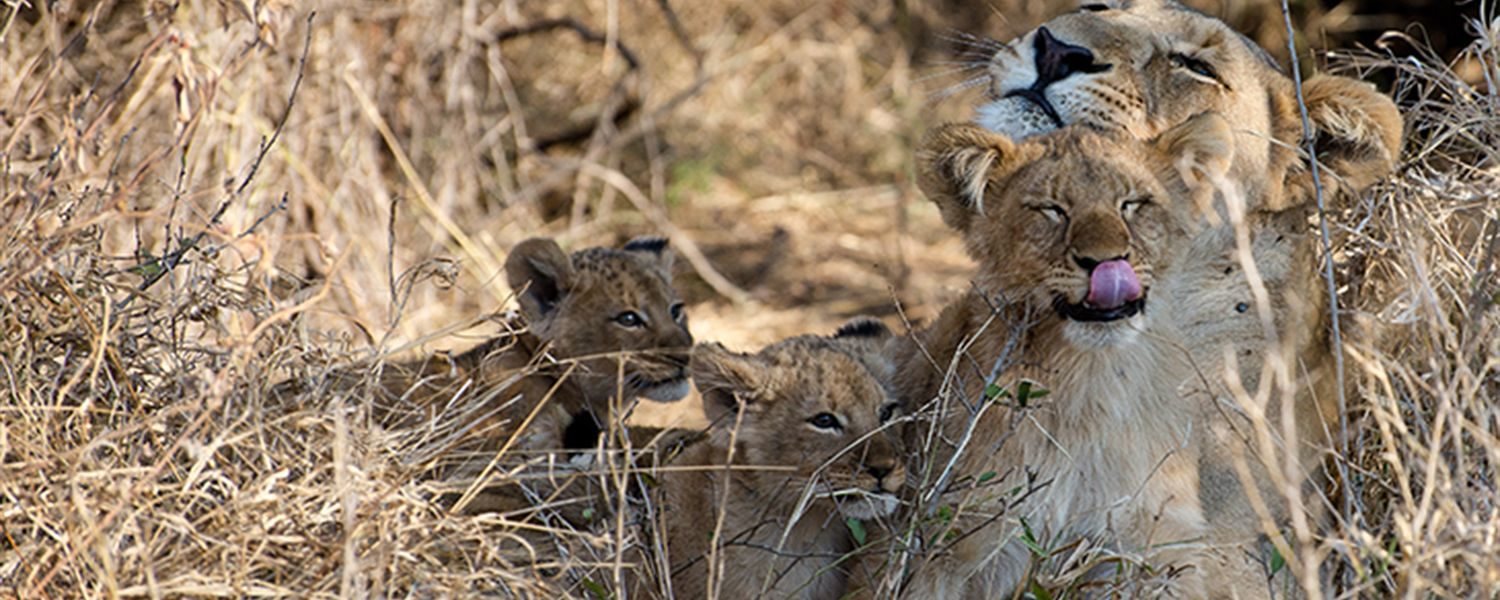
Wildlife tourism: Good or bad?
By: Joe Fader, Broadreach instructor May 23, 2019 High School Adventures, Wildlife Conservation
Rhinos and elephants in Africa. Sea turtles and sharks in the Caribbean and tropics worldwide. Jaguars, bears and primates in the Galápagos. What do these creatures have in common? These magnificent animals serve as a huge attraction for wildlife tourism, but many of them are endangered or at risk of going extinct.
The loss of species diversity on our planet is a global problem that affects us all, and is also a problem that we have the power to change. Travel can be a great way to affect this change, but can also exacerbate problems if not done properly.
Background
Tourism has the ability to add great value to wildlife, but it has too often led to profit-driven pursuits. Historically, it was a given that since these animals are dead, they’re easier to eat or make into something expensive. With wildlife-based tourism, there’s only value present if the animal or plant is alive. Industries such as safaris, scuba diving and whale watching all depend on the presence of the animals or habitat that people are there to experience.
The benefits
By protecting a single, charismatic species that tourists love and will spend money to see, we can actually protect a plethora of other species that share its habitat. If people want to see pandas eating bamboo in China or gorillas in the rainforests of West Africa, there needs to be bamboo and a rainforest for them to visit. Everything else that depends on those habitats, including the trees themselves, benefits. Conservationists call this the “umbrella effect,” and it serves as a great way to get more land or water into national parks and protect critical habitats from threats such as over-development, pollution, hunting and/or fishing.
The drawbacks
As wildlife tourism in an area increases, more people will interact with that wildlife. This can be a real problem because some wild animals aren’t fond of having people around, and humans often leave trash and other substances that can negatively impact the habitat of a species. When human presence radically changes the behavior, health or habitat of wild animals, then we could negate the benefits tourism could provide. In addition, tourism development often encroaches on fragile wildlife habitats, especially in coastal areas.
How to offset the negative
Things like litter and graffiti are all too common in what should be beautiful, pristine places for wildlife. Humans tend to affect animals by leaving food scraps around or, even worse, directly feeding animals that get accustomed to people. You can help the animals by adhering to the saying, “take nothing but pictures, leave nothing but footprints.” The same goes for the ocean too, especially around coral when snorkeling or scuba diving. Coral is comprised of thousands of tiny polyps that build coral reefs and are incredibly sensitive—they can die simply from the oils on human skin. If an errant flipper happens to break off a chunk of coral, it could take decades to recover. Additionally, coral is already threatened with climate change, coastal development and harvesting. Enjoy your time snorkeling and scuba diving, but be mindful of the environment in which you’re exploring.
Choose a good travel provider
It’s important to be aware of how we interact with animals themselves, too. Consider swimming with dolphins, a popular activity in many coastal areas and a great excursion as part of Broadreach’s Marine Biology programs. Coming face-to-face with a dolphin in the wild can be a life-changing experience. However, being constantly followed by loud boats and large groups of people can put a great deal of stress on dolphins, and there is some evidence that it may cause lasting harm. In Hawaii for instance, spinner dolphins spend all night feeding far offshore and then come into shallow coves for some R&R during the day. Dolphin-swimming tours usually target them during this resting period which can cause stress and changes in their behavior.
Whether scuba diving, on a dolphin tour, safari or any of the other many wildlife-based tours, you will find that different operators have different standards. Some dolphin tour companies encourage clients to touch or ride dolphins for instance; others even use captive dolphins that are released into a bay. Consider your provider carefully when embarking on an adventure, doing your research to ensure you’re working with certified, environmentally and wildlife friendly outfitters. Supporting companies with good practices demonstrates a growing want and need to consider these issues when traveling, and will hopefully encourage better practices in the future.
Overall, wildlife-based tourism can be a powerful tool in the fight to conserve biodiversity and end species extinction. While it may seem like some wildlife tourism companies are seemingly putting a price tag on a species or individual animal, creating economically viable wildlife is one of the most effective ways to stop poaching and habitat encroachment and ensure the future survival of vulnerable and valuable creatures. Even better, wildlife tourism puts the power in consumers’ hands to support responsible companies that respect wildlife and enrich local communities.
We encourage you to enjoy all the amazing things that nature has to offer on your next vacation, weekend getaway or Broadreach trip, which can help students study endangered species in order to rehabilitate them and protect them. Broadreach’s animal science programs put students in real life situations with some of the world’s top veterinarians, conservationists and biologists, allowing them to gain practical experience in animal care, preventive medicine and surgery.
Joe Fader is a Broadreach Instructor who also works as a fisheries observer in Hawaii and Alaska, going to sea with commercial fishermen to collect data about catch and fishing activities and mitigating interactions with endangered species. He has worked as a naturalist aboard public whale-watching cruises, a trail-guide for a public hiking program in California, and has taught college students in lectures, laboratories and the Costa Rican rainforest.
Article references:
- Cisneros-Montemayor, A. M., U. R. Sumaila, K. Kaschner and D. Pauly (2010). “The global potential for whale watching.” Marine Policy 34(6): 1273-1278.
- Cisneros-Montemayor, A. M., Barnes-Mauthe, M., Al-Abdulrazzak, D., Navarro-Holm, E., & Sumaila, U. R. (2013). Global economic value of shark ecotourism: implications for conservation. Oryx, 47(03), 381-388.
- Courbis, S. and G. Timmel (2009). “Effects of vessels and swimmers on behavior of Hawaiian spinner dolphins (Stenella longirostris) in Kealake ‘akua, Honaunau, and Kauhako bays, Hawai’i.” Marine mammal science 25(2): 430-440.
- Heenehan, H., X. Basurto, L. Bejder, J. Tyne, J. E. S. Higham and D. W. Johnston (2014). “Using Ostrom’s common-pool resource theory to build toward an integrated ecosystem-based sustainable cetacean tourism system in Hawai`i.” Journal of Sustainable Tourism: 1-21.
- iworry (2014). “Dead or Alive? Valuing an Elephant” (http://iworry.org/wp-content/uploads/2013/09/Dead-or-Alive-Final-LR.pdf)
Learn more about our summer wildlife conservation programs here.
